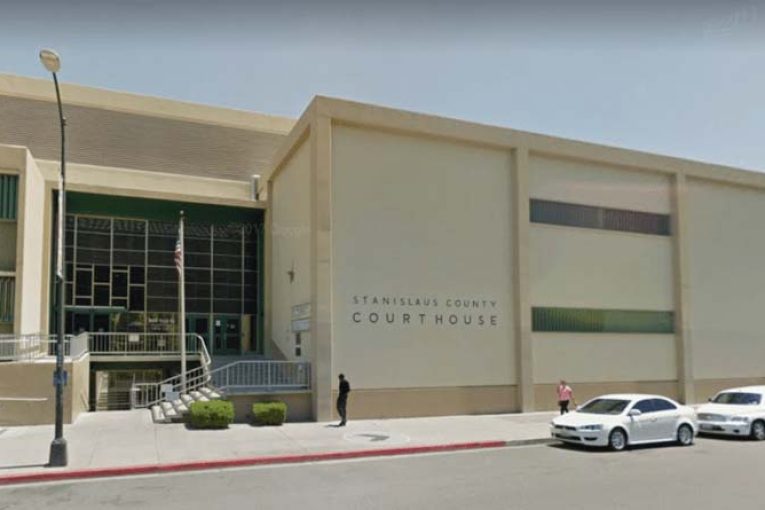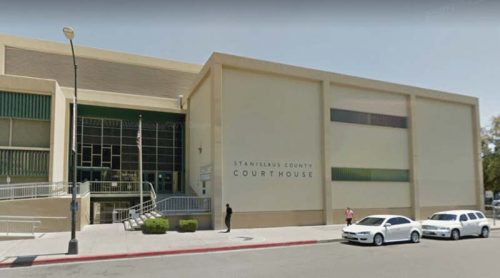

By Cheyenne Galloway
MODESTO, CA – District Deputy Attorney Amy Elliot Neumann and Alternate Public Defender Clifford Hiufung Tong argued here in Stanislaus County Superior Court last week the efficacy of a second resentencing request for an implied malice second degree felony murder case.
Judge Dawna Reeves, at the end of the hearing, did not rule and told the parties the court would provide the attorneys with a written decision “in a reasonable amount of time.”
DDA Neumann noted, “The appellate court said that the trial court did not instruct the jury on any theory of natural, probable, or imputed malice, and that’s exactly what happened,” and said the only reason the appeal was denied is “if there is a change in the law that impacts that decision; and there isn’t…the change in the law that came in 2022 talks about a theory of imputed malice.”
However, DDA Neumann stated any theory of imputed malice was absent in the jury instructions and disregarded in the information provided by the prosecution before the final verdict, contending all of the instructions available for the jury pertained to premeditated murder and an aider and abettor with implied malice, the latter being the argument against the accused.
“And if you recall the facts, he was the first to bring a gun into the altercation between the two groups of people,” said DDA Neumann about the accused.
As reported by DDA Neumann, “The People vs. Lamgi” case used in the defense argument included a petition denied earlier, resulting in the appellate court determining that the case needed to go to an order to show cause (OSC) and an evidentiary hearing.
The defense brought this up in the previous jury trial to highlight the similarities between that case and the current accused’s case.
However, according to DDA Neumann, “The People vs. Lamgi” case does not apply here because “In Lamgi, there was a felony murder theory that was put in front of the jury, so the jury had felony murder instructions. There were no felony murder instructions in the accused’s case. It was only about premeditated murder, or aider and abettor, so Lamgi doesn’t apply.”
The DDA concluded, “The court should make the same determination made last time—not entitled to resentencing. The Appellate Court affirmed it, and the court should do the same again with this petition.”
The defense’s Tong disputed that the law had changed since the original petition by the accused, charging under the law at the time, the accused’s plea for resentencing was denied.
However, Tong restated, “The law did change. It did expand relief—as the court knows—to include those prosecuted under a theory of imputed malice.”
For Tong, the Lamgi case does apply because the circumstances in that hearing are the same as the events of the current court proceeding.
“But there is also a not guilty verdict on the first degree, and the defendant in the latter case (the current accused) was convicted of second-degree murder,” stated Tong.
As defense attorney Tong explained in his argument, and as stated by the court, “Essentially, the way the instructions were given gave way to ambiguity as far as a possibility of a theory of imputed malice.” He then explained the stark differences in jury instructions for a murder hearing and an aider and abettor situation.
For jury instructions associated with a killer, there are other elements to consider, such as whether the perpetrator had expressed malice or implied it, according to Tong, who added, for aider and abetter jury instructions, the court has to determine if the individual accused of aiding and abetting solely encouraged the act; there is no mention of malice.
“And so, given that with the way the instructions on the complexities of second degree, implied malice murder, there’s a scenario where a jury could find and did find conviction of secondary murder by aiding and abetting an act without an expressed finding of malice—whether it’s expressed or implied—and that is the issue,” said Tong.
In the other cases regarding implied malice presented to the court by the defense, Powell and Lamgi, it is noted by Tong the court must provide precise jury instructions to overcome any potential ambiguities in the outcome.
Tong continued using the information mentioned above, stating, “Lamgi: does apply here, and the new law providing expanded relief falls within the accused’s jurisdiction because there is a theory of imputed malice relevant within this case that was not expressed in the jury instructions by the court.”
Tong said, “There were no natural probable consequences instructions here,” which was the same occurrence in the Lamgi case and argued the jury called for malice in the accused’s hearing based solely on his participation in a crime, without discerning whether or not he acted with malice.
Judge Reeves asked, “One of the things that is confusing to me that I want to make sure that we are all clear on is that there is a distinct difference between implied malice and imputed malice.” To which both the court and the attorneys agreed.
“Now, Mr. Tong, what you are arguing is that the accused had imputed malice, which has been outlawed, but can you point to the jury instructions 400 or 401, which were given in his case, any element in there that is either missing or added, that is no longer valid? So I’m asking how does 400 and 401—what the jury was instructed on—indicate imputed malice?”
Tong quickly replied, none of the instructions address malice implied or imputed malice. To thoroughly convict an individual of murder, there must be an indication of either implied or expressed malice.
Ultimately, implied malice still requires a finding and proof of criminal intent, said Tong, adding, “Because of the fact that the aiding and abetting instructions just essentially focus on encouraging and facilitating impact without any expressed discussion of malice.”
For Tong, the lack of information surrounding jury instructions for aiding and abetting is why other courts stated there needs to be more specific and narrowly tailored instructions incorporating the use of malice (expressed or implied) for second-degree murder cases in the future.
Otherwise, warned Tong, “This ambiguity stands, and this malice would be imputed because the jury didn’t find that the accused had any malice, just that he’s convicted due to the jury instructions, and that is the issue.”
DDA Neumann agreed the court did not instruct the jury on implied or imputed malice.
Nonetheless, DDA Neumann stated, “All of the jury instructions of 401 still apply…So the court needs to decide whether as a matter of law, particularly given that the appellate court has already weighed in on this.”
Judge Reeves re-clarified, “So what Mr. Tong is arguing is that because the fifth element was not before the jury at the time that he was convicted, (Tong) has established a prima facie case due to the missing fifth element. And your argument is what?”
DDA Neumann stated her argument encompasses the facts that the jury instructions did not contain the fifth element presented in Tong’s argument, but the appellate court has already found the instructions were sufficient enough to rule a conviction for second-degree murder with implied malice.